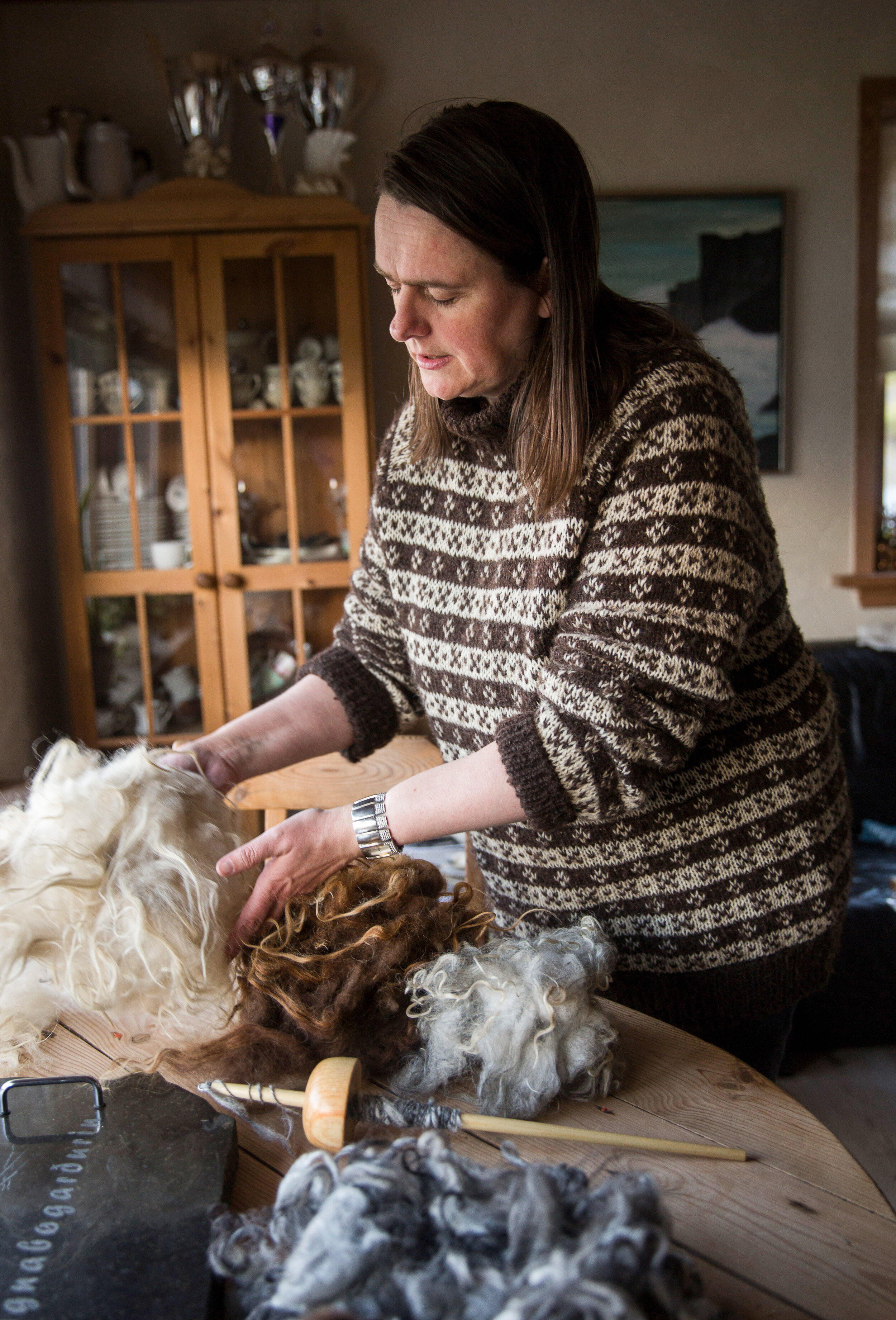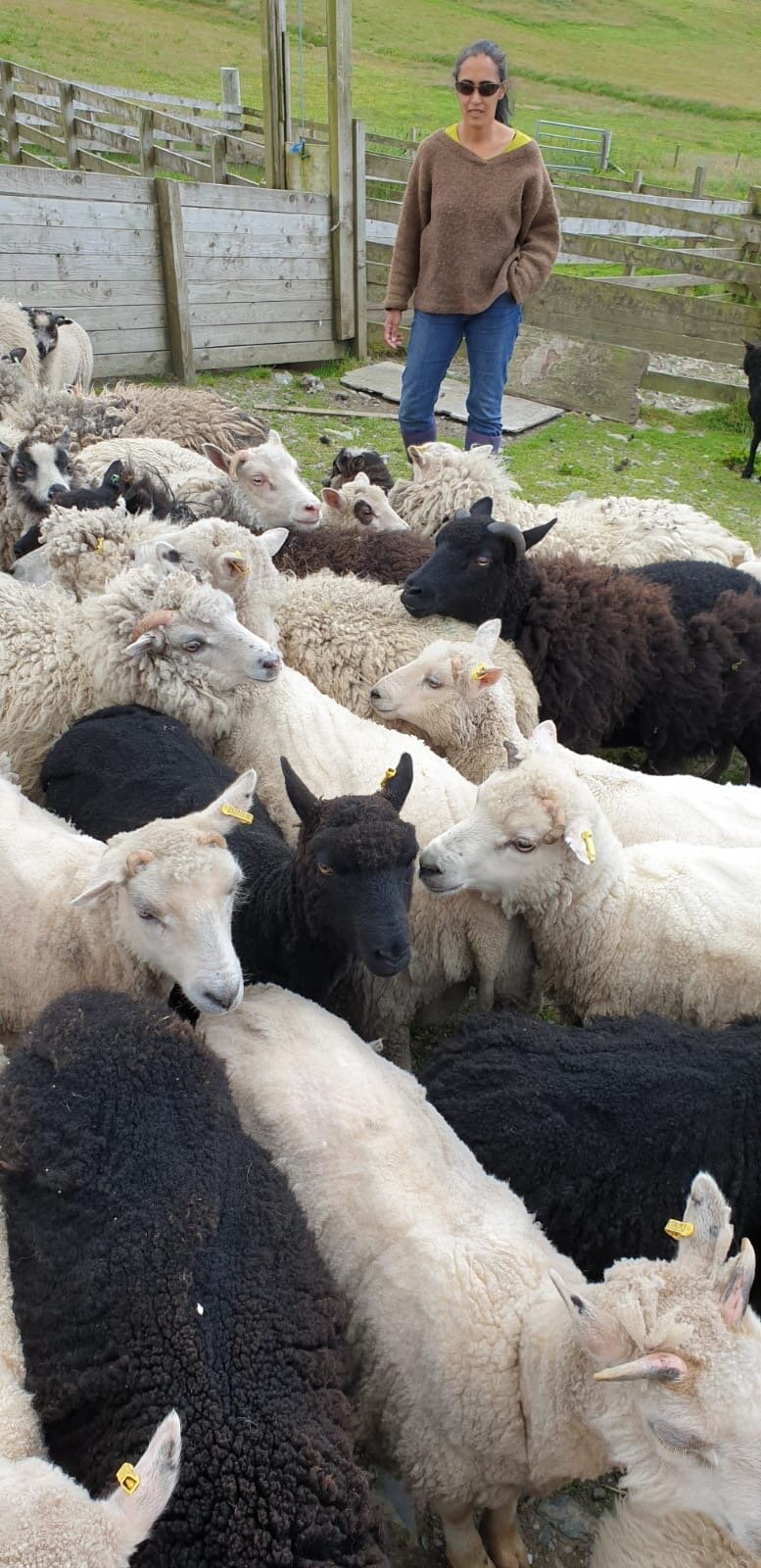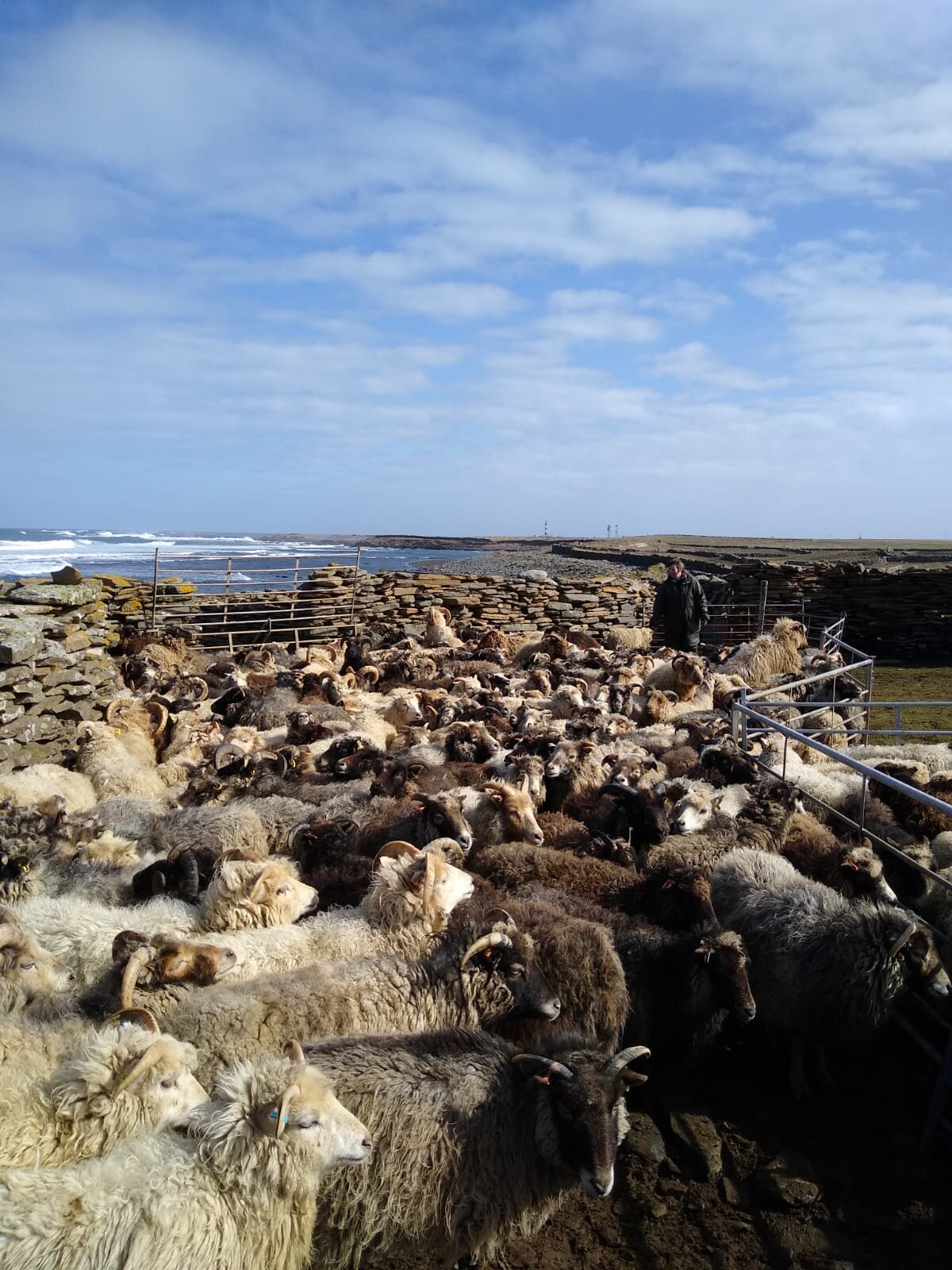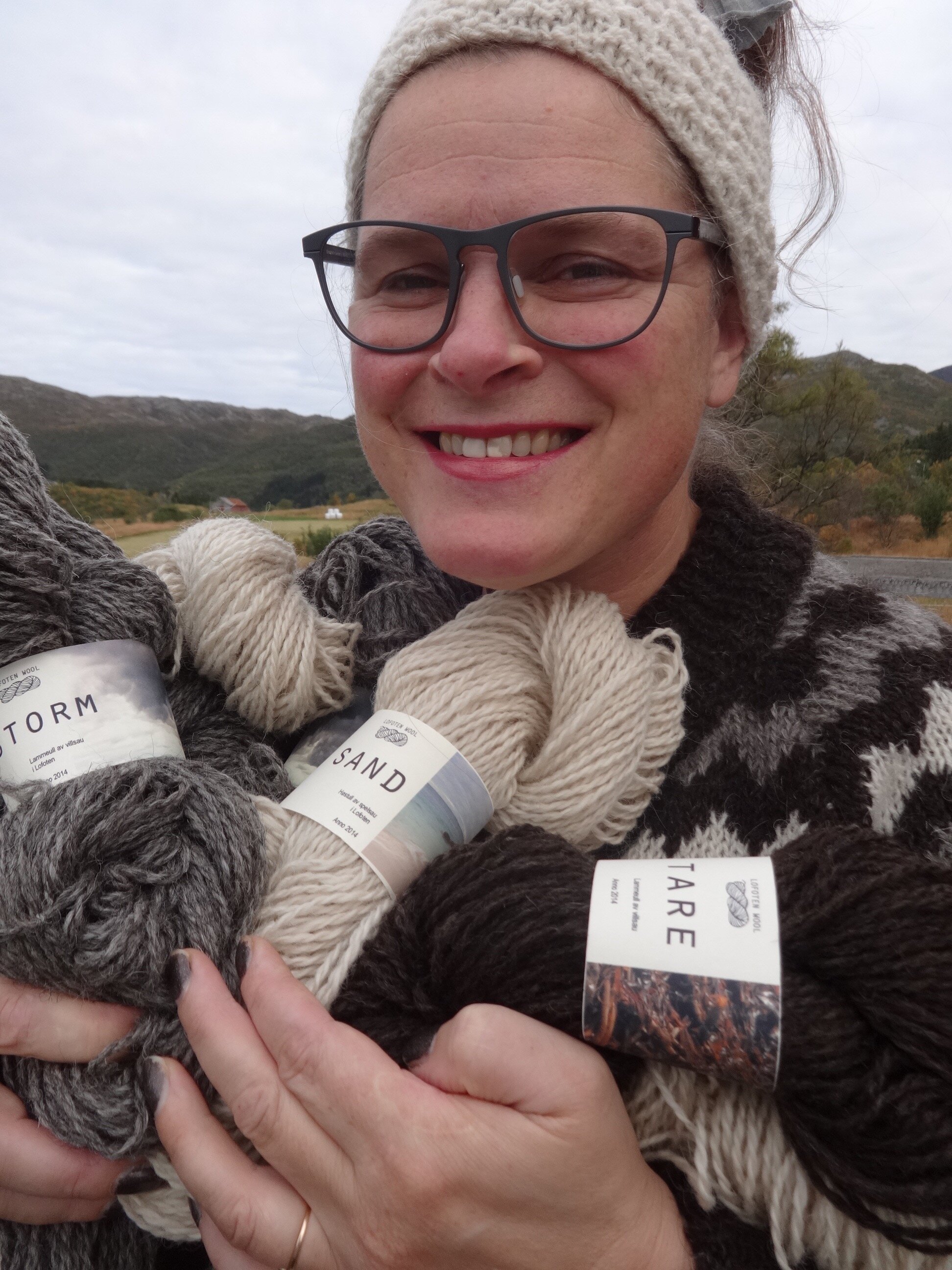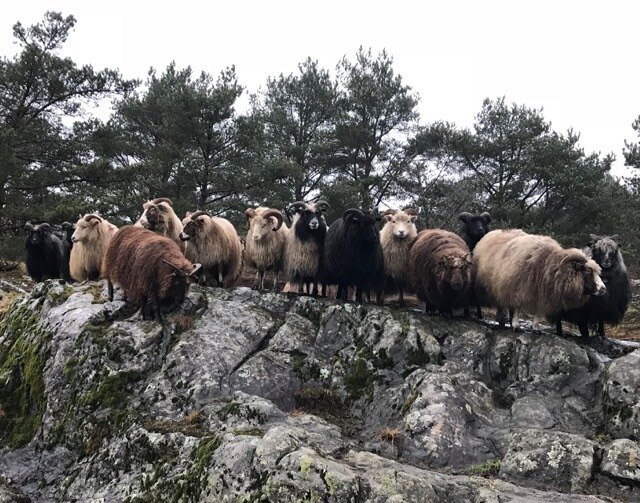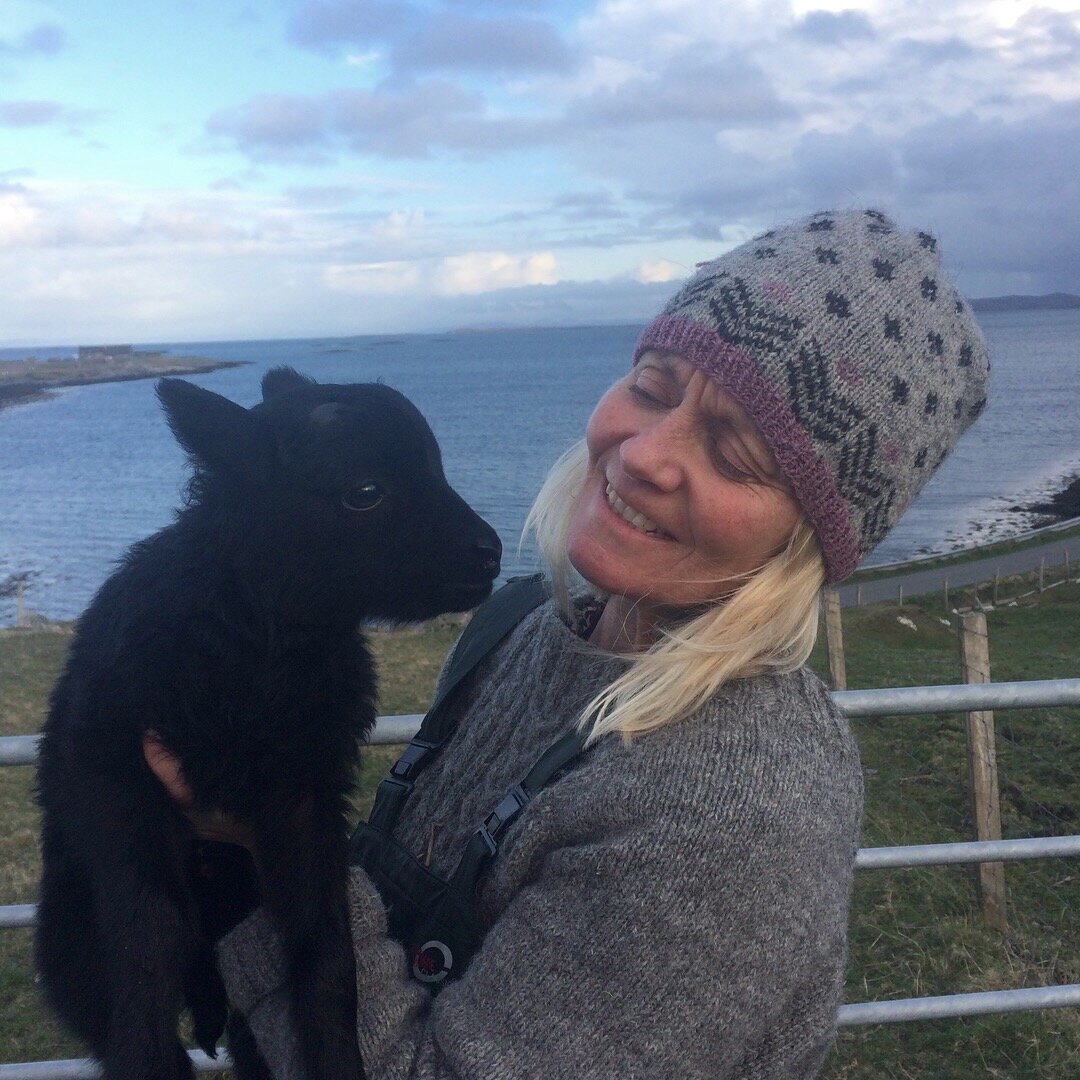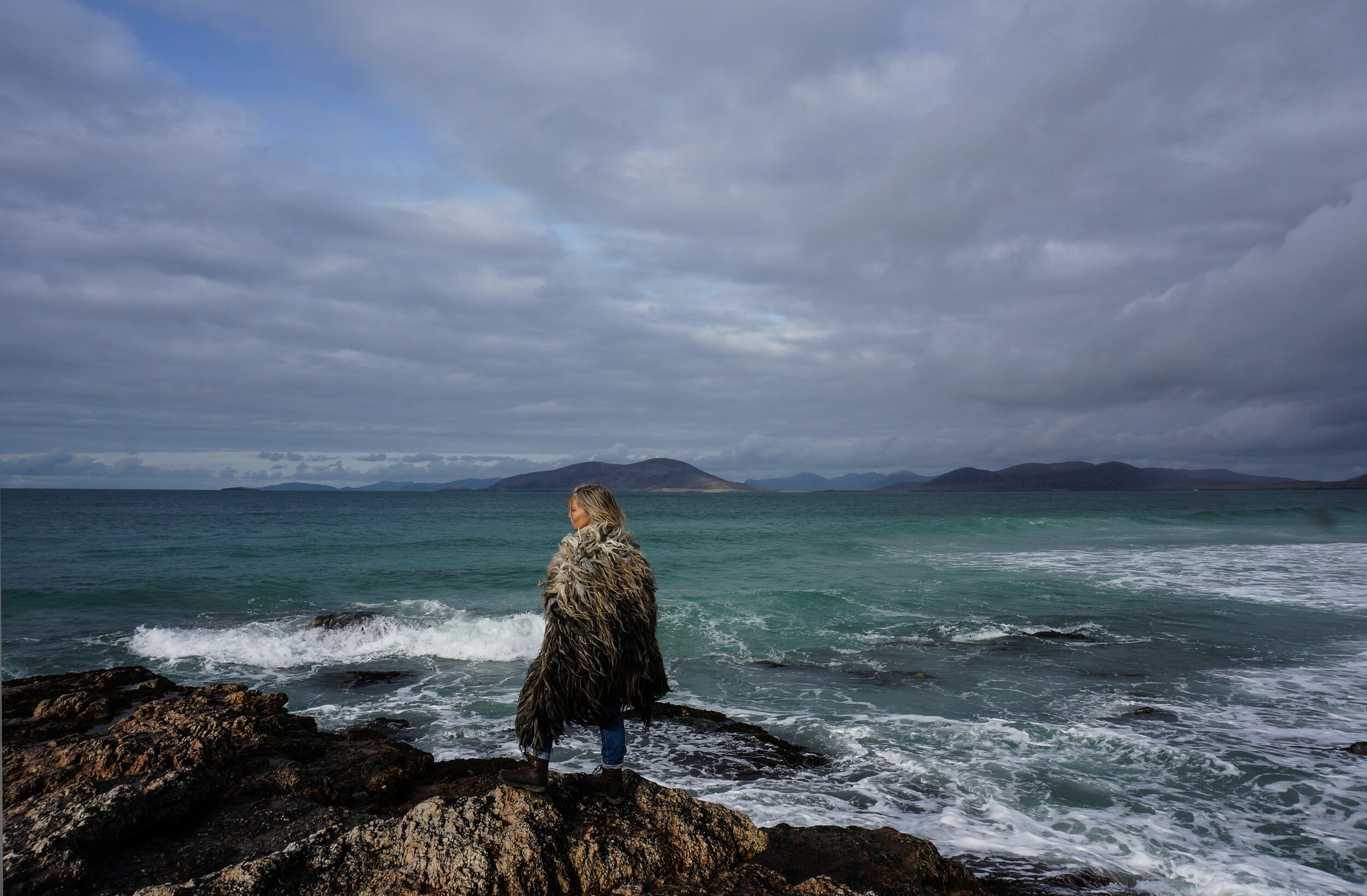
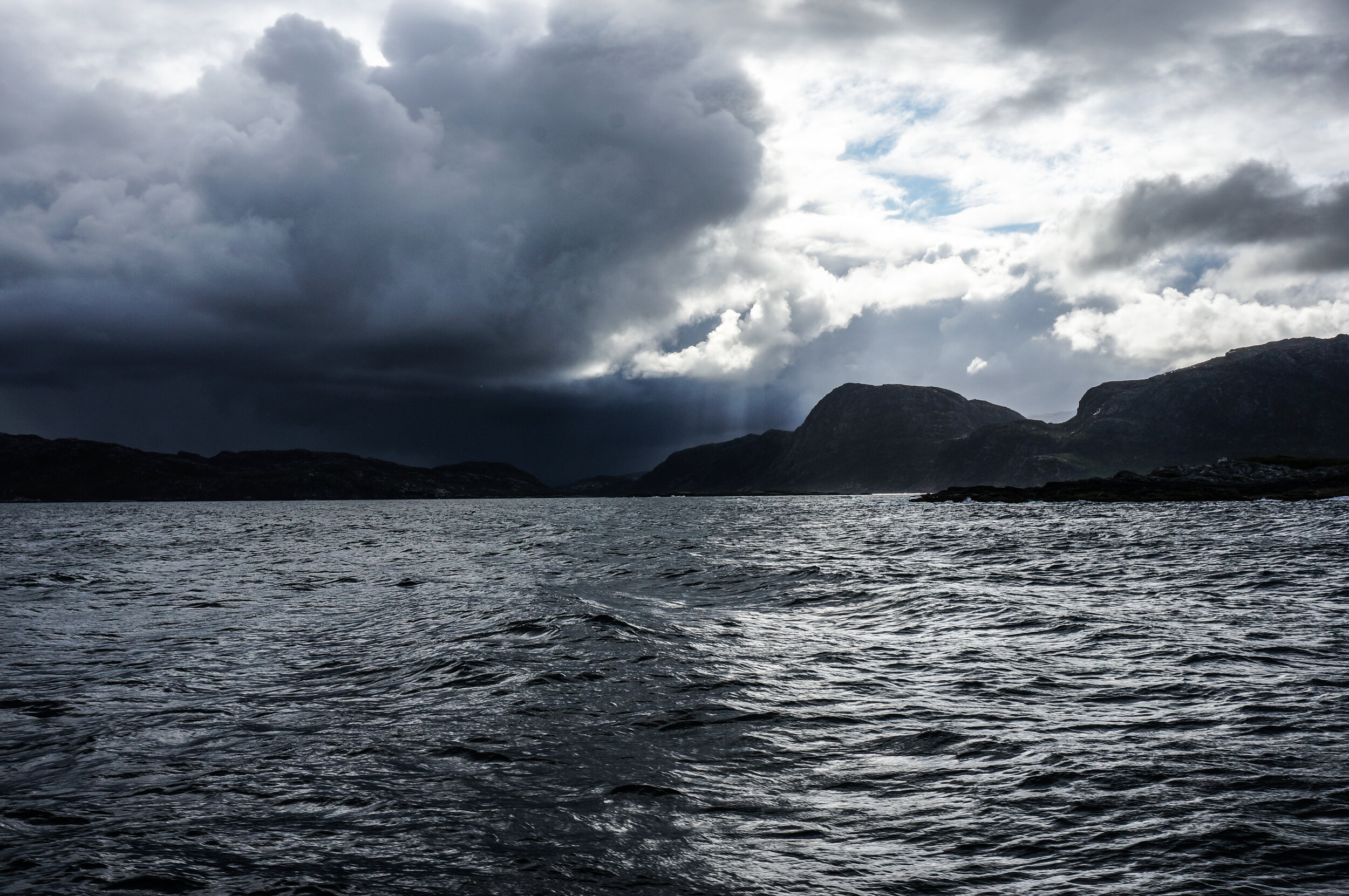
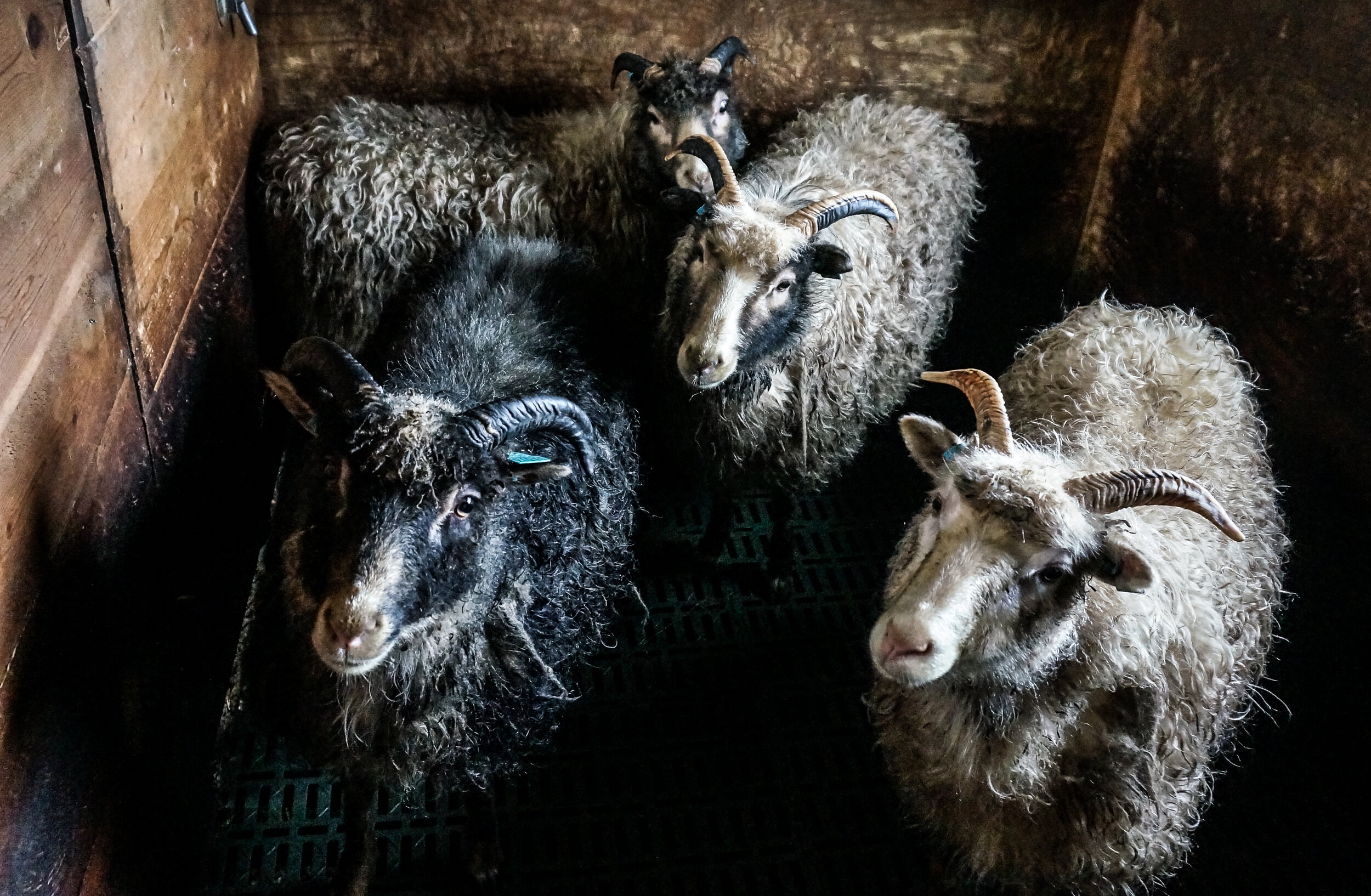

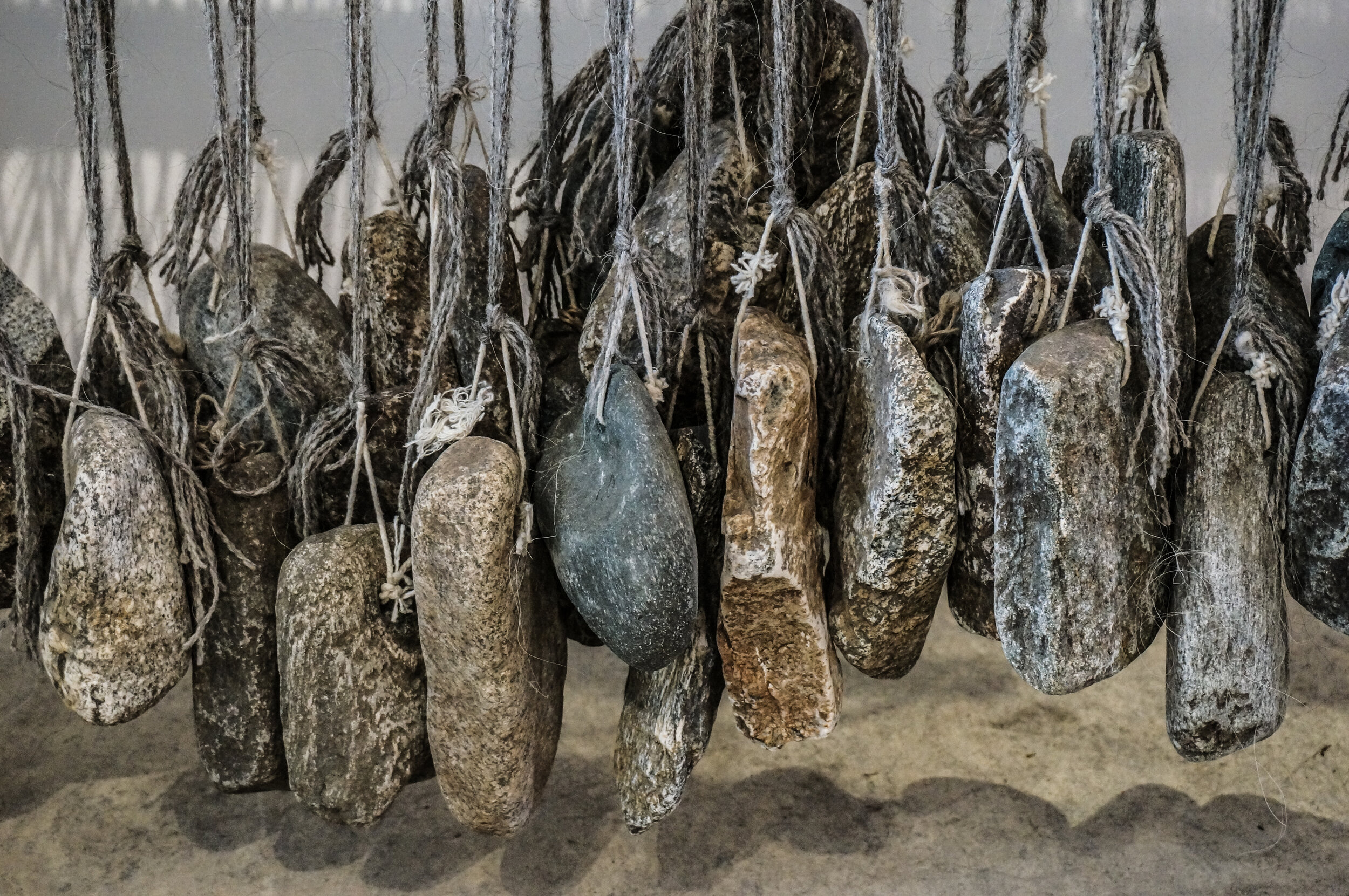
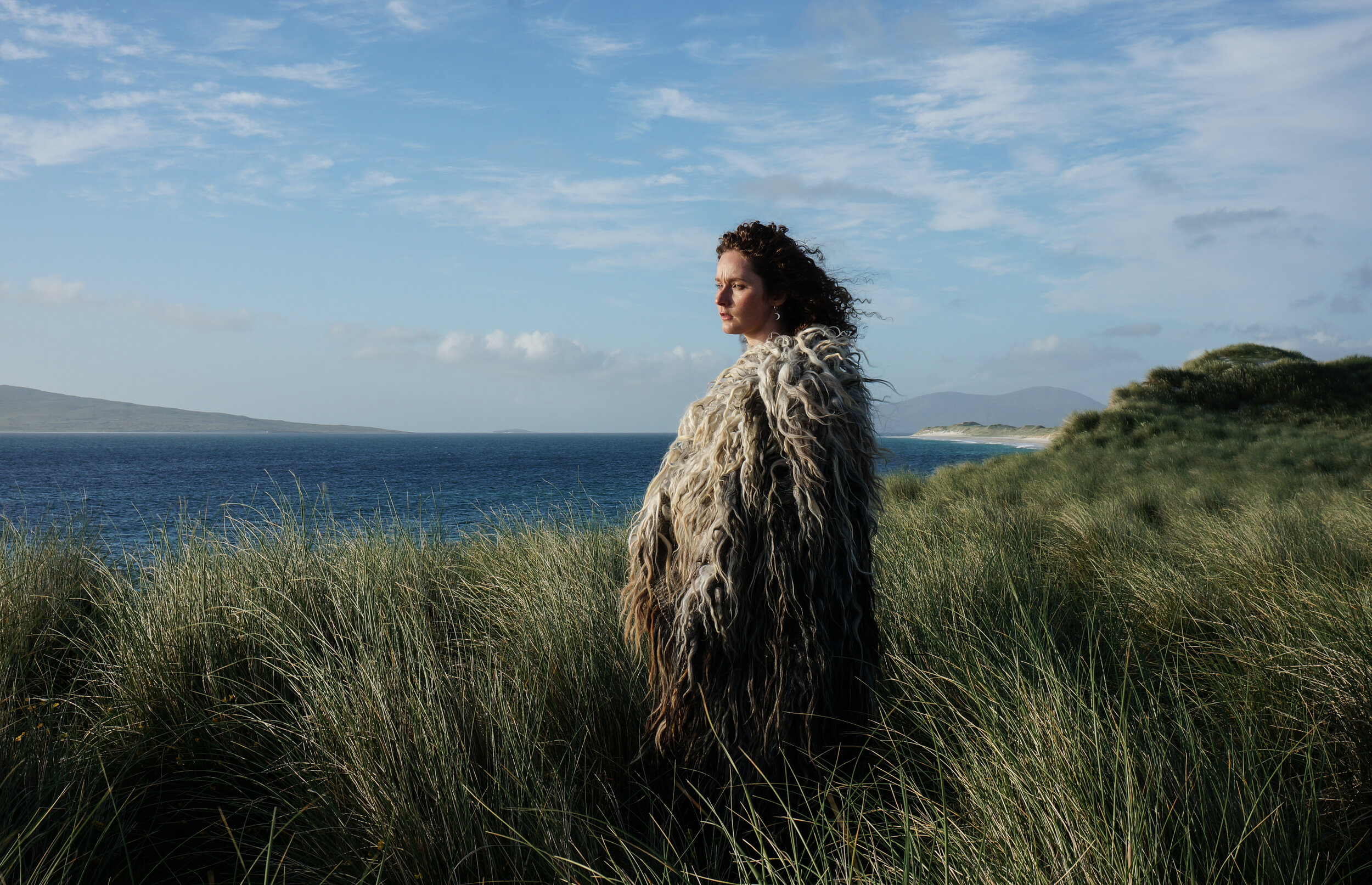
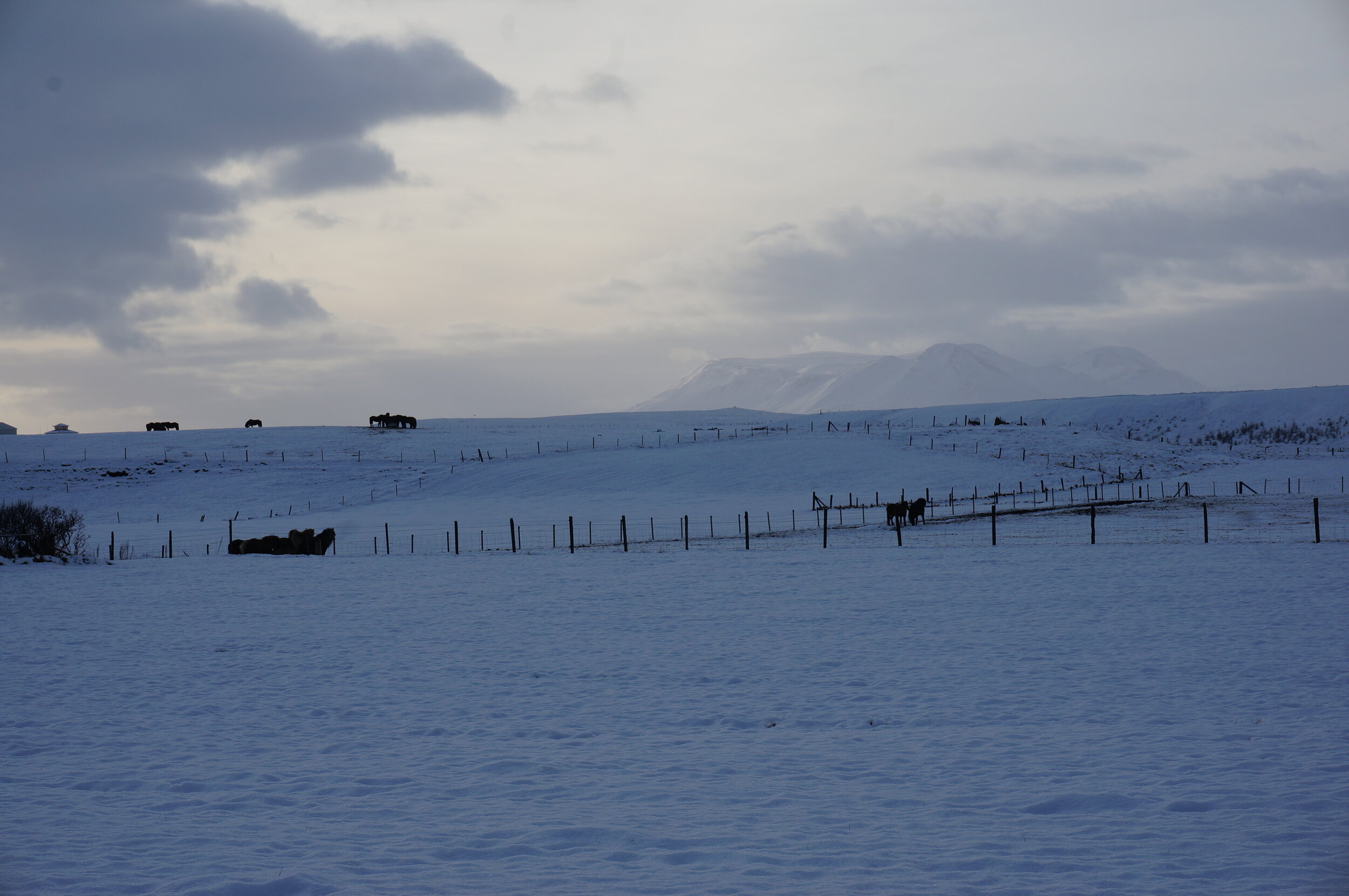
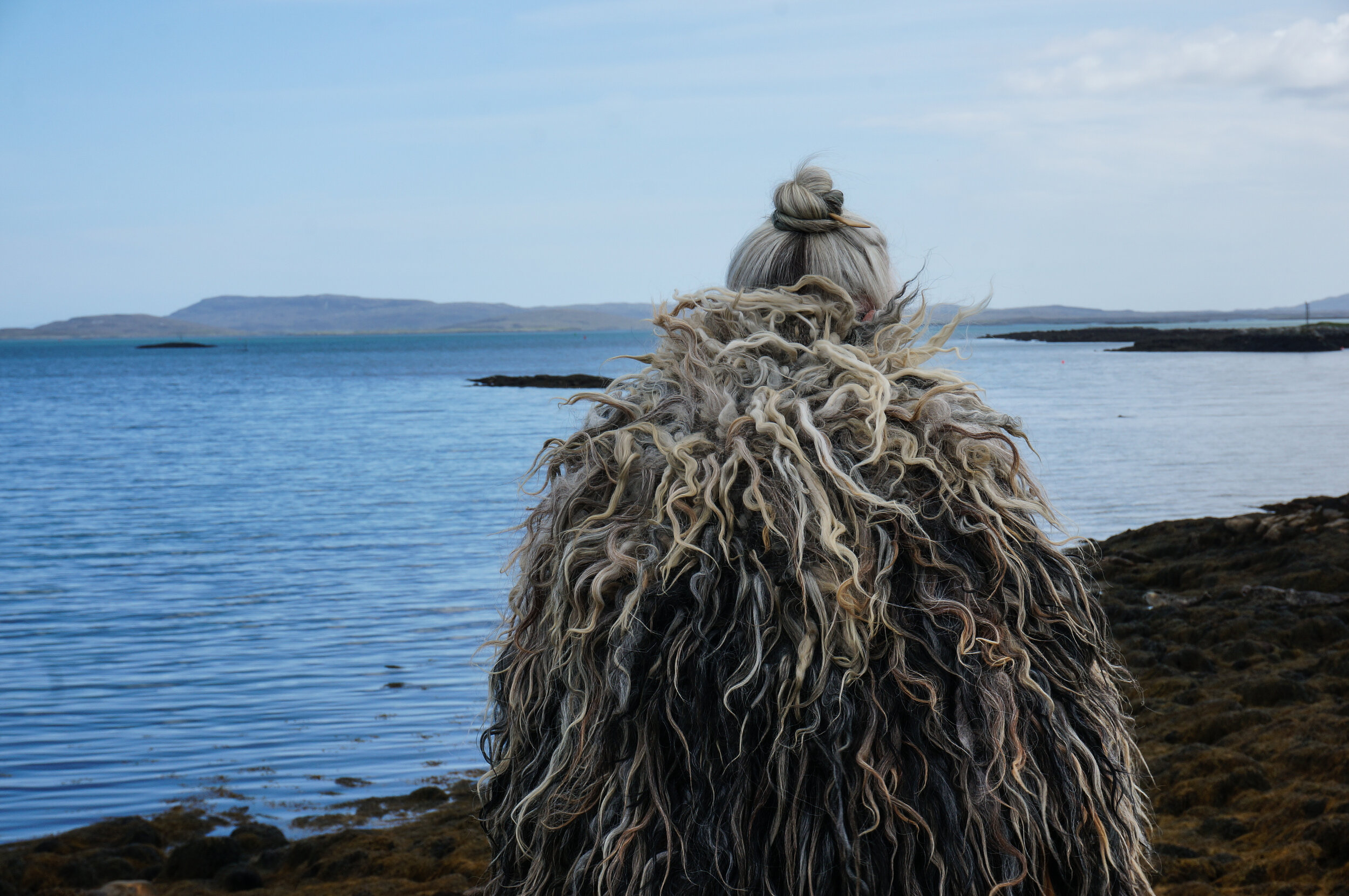
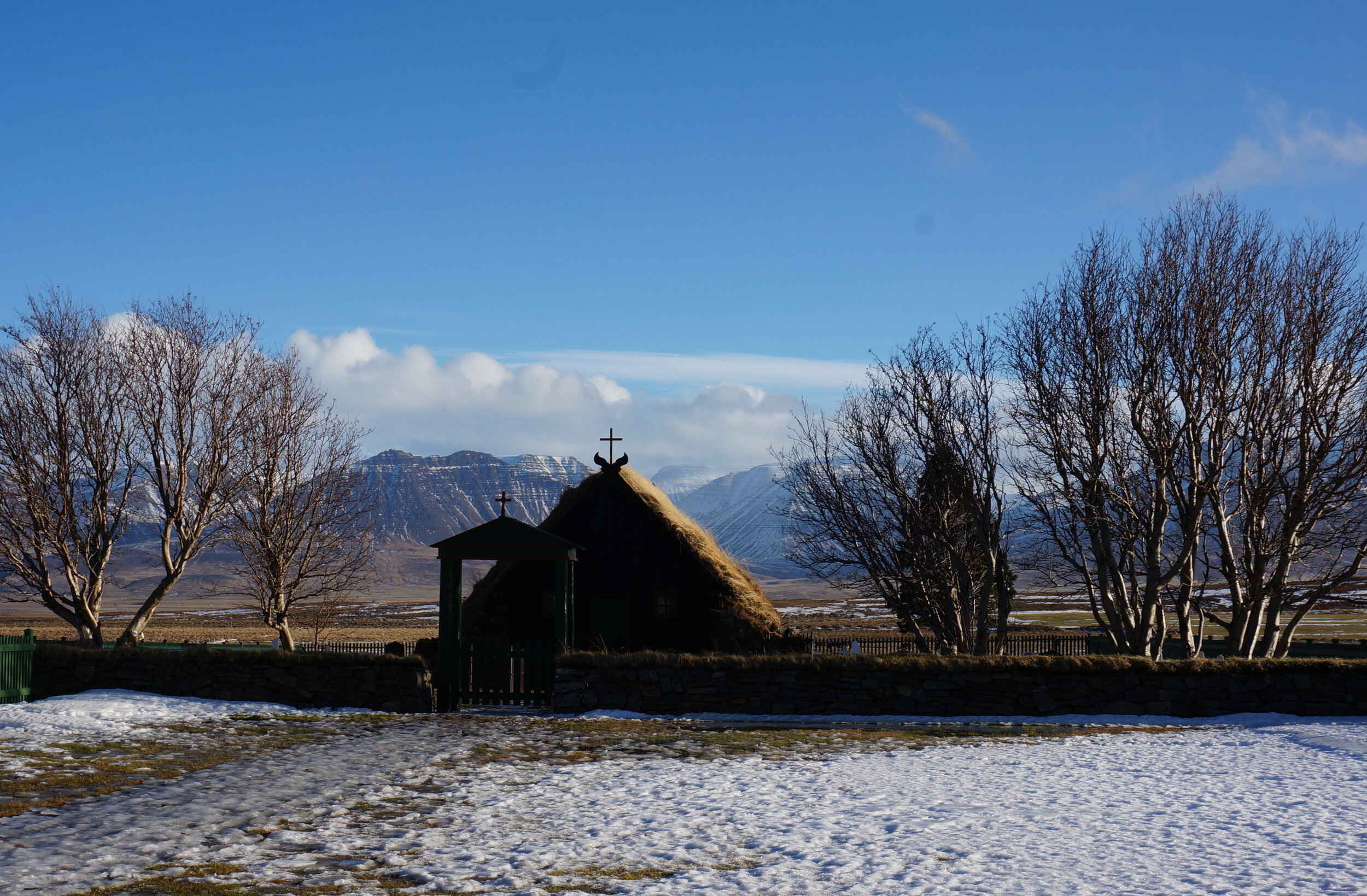
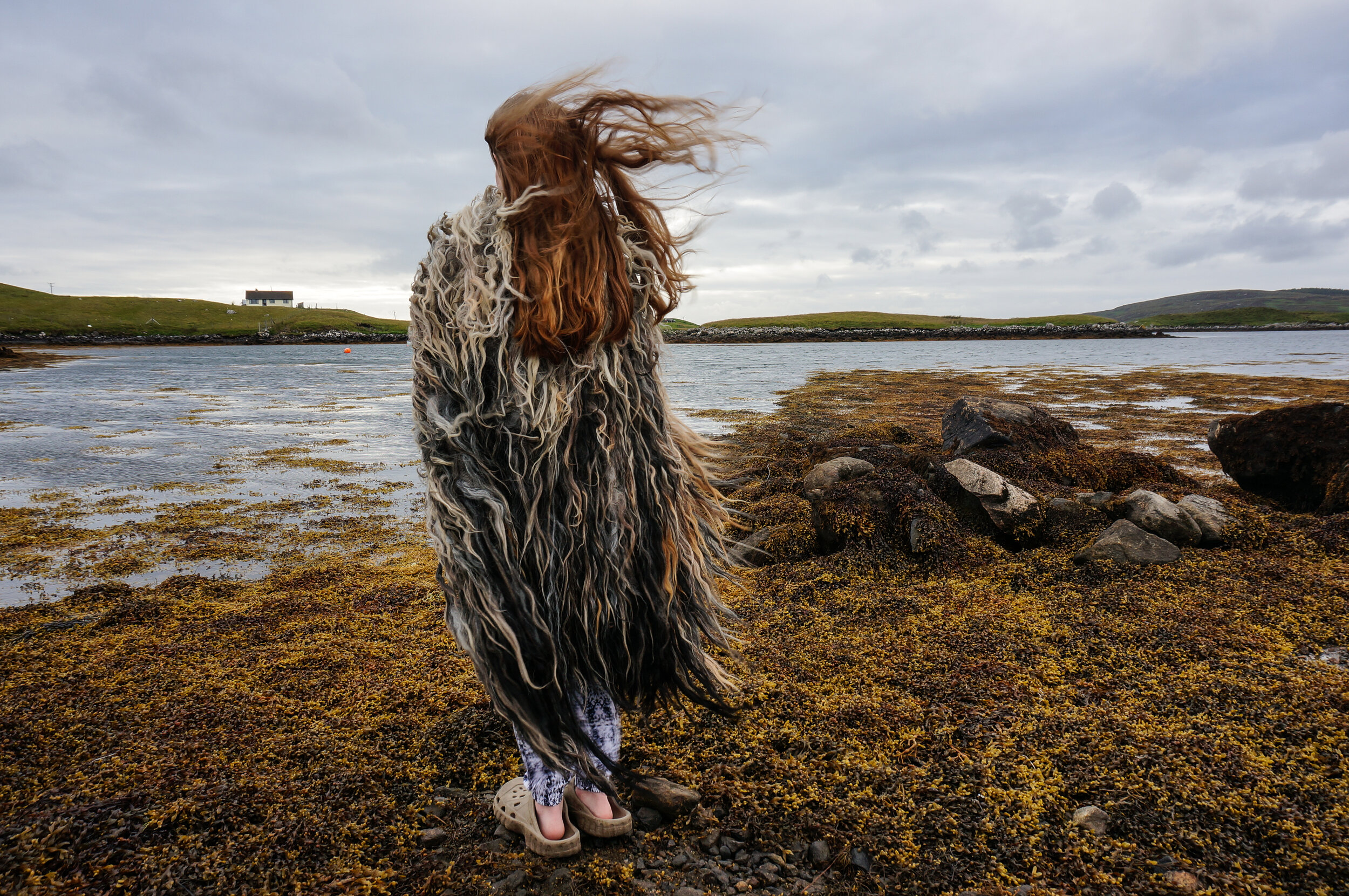
AUĐuR THE DEEP MINDED (2020)
A thousand year old saga of a valiant viking woman linked to the contemporary women of the Outer Hebrides.
Exhibition dates:
Taigh Chearsbhagh Museum and Art Gallery, North Uist - 2nd October - 30th November 2020.
Osterøy Museum, near Bergen, Norway - June - August 2022.
Recording of Zoom Preview on Friday 2nd October 19:00: HERE
Previews speakers included: Meg Rodger, Artist; Jóhanna E. Pálmadóttir, Project manager, Textílmiðstöð Íslands / Icelandic Textile Center, Blönduós, Iceland; Solveig Jordal, Monika Ravnanger and Martha Marta Kløve Juuhl, Osterøy Museum, nr. Bergen, Norway; Andrew Jennings, Lecturer & Postdoctoral Researcher, Institute for Northern Studies, Shetland.
Produced by UistFilm in collaboration with Meg Rodger.
Auður the Deep Minded lived in the 9th century, yet her story of flight, migration and strong female leadership is still as relevant today as it was then. Auður fled tyranny in Norway and subsequently violence in the Outer Hebrides and the Highlands, before captaining her own vessel and guiding her people to safety and settlement in Iceland. She is one of the most prominent female figures in Icelandic medieval texts with her story written down in the Laxdaela Saga and Landnámabók (Icelandic Book of Settlement).
“It is said that Auður was tall and stoutly-built. She walked briskly down the length of the hall, and those present remarked on how stately she still was.”
(Laxdaela Saga 13thC. - Chapter 7)
The men in Auður’s life were amongst the most powerful vikings of her era. Her husband, Olaf the White, was the Viking king of Dublin, her father Ketil Flatnose ruled the Hebrides and her son Thorstein the Red inherited his grandfather’s territory and, in addition, took control of a large part of the Highlands. All these men succumbed to violent deaths as was honourable in viking culture. In contrast, Auður during this time came into contact with the teachings of Iona and converted to Christianity. She was very devout and it was most likely her faith that gave her the vision to guide her people in a strong yet peaceful manner.
Following the deaths of her male relatives, Auður was isolated and vulnerable to her family’s adversaries. She thus gathered together the remains of her family, noble men and slaves and set sail to Iceland. There she was the only woman to claim settlement lands in her own right and once established she set her slaves free, allocating them land as she had done for her own people. Iceland was settled rapidly between 870-930 AD, with the majority of settling females being of Hebridean origin. Even today, in Iceland the Hebrides are referred to as the Suðureyjar ‘the southern islands’ from whence they came.
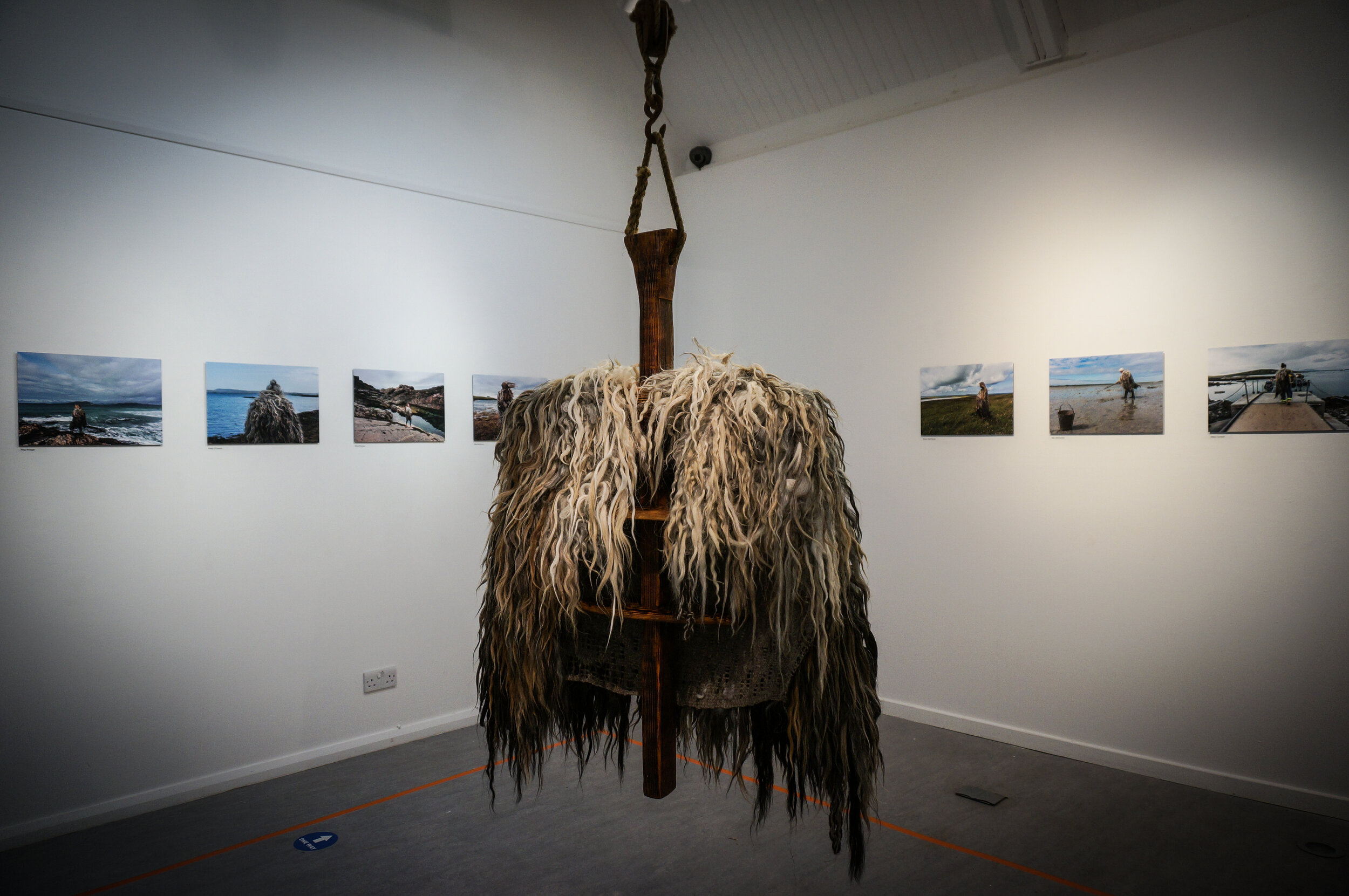
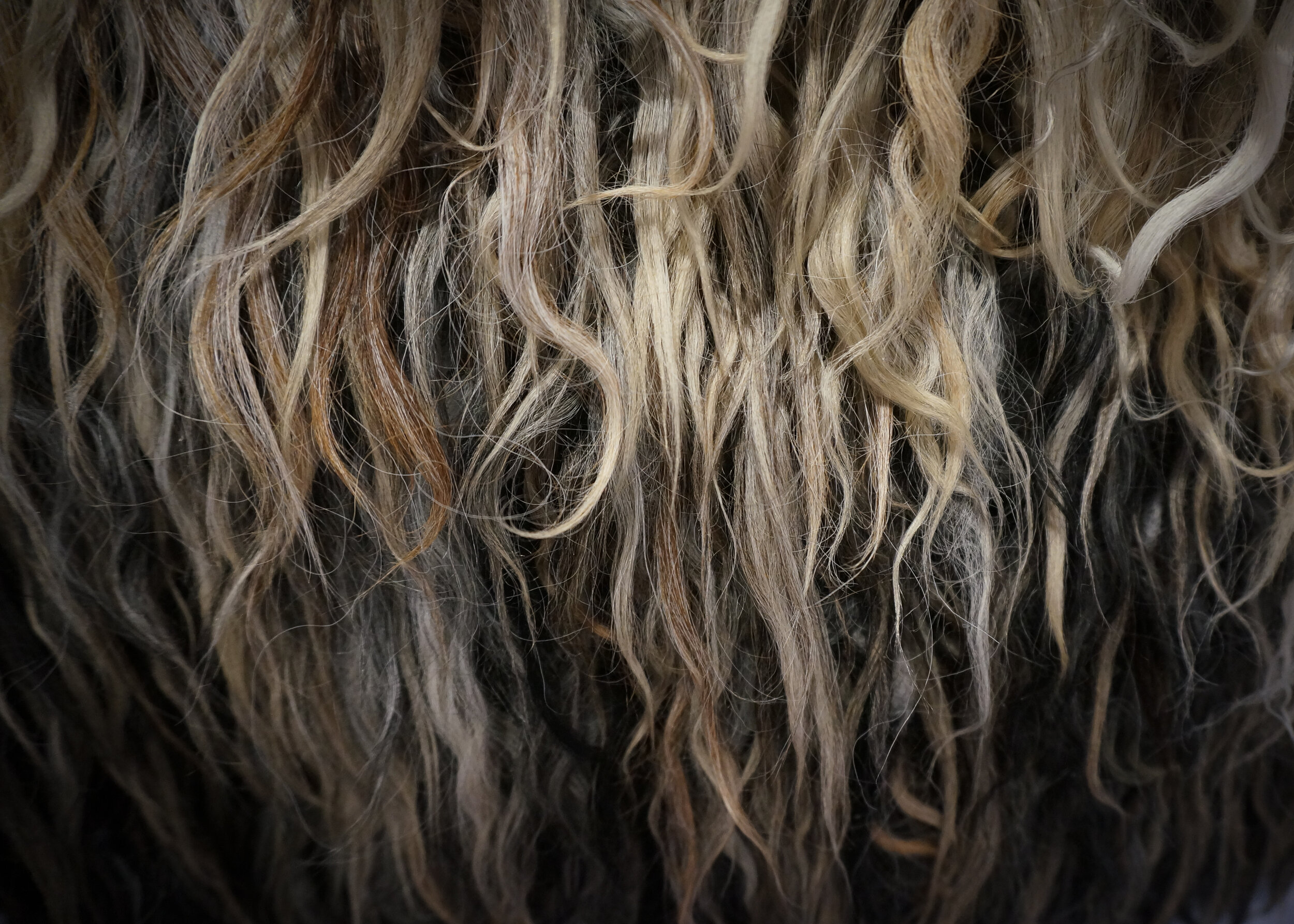
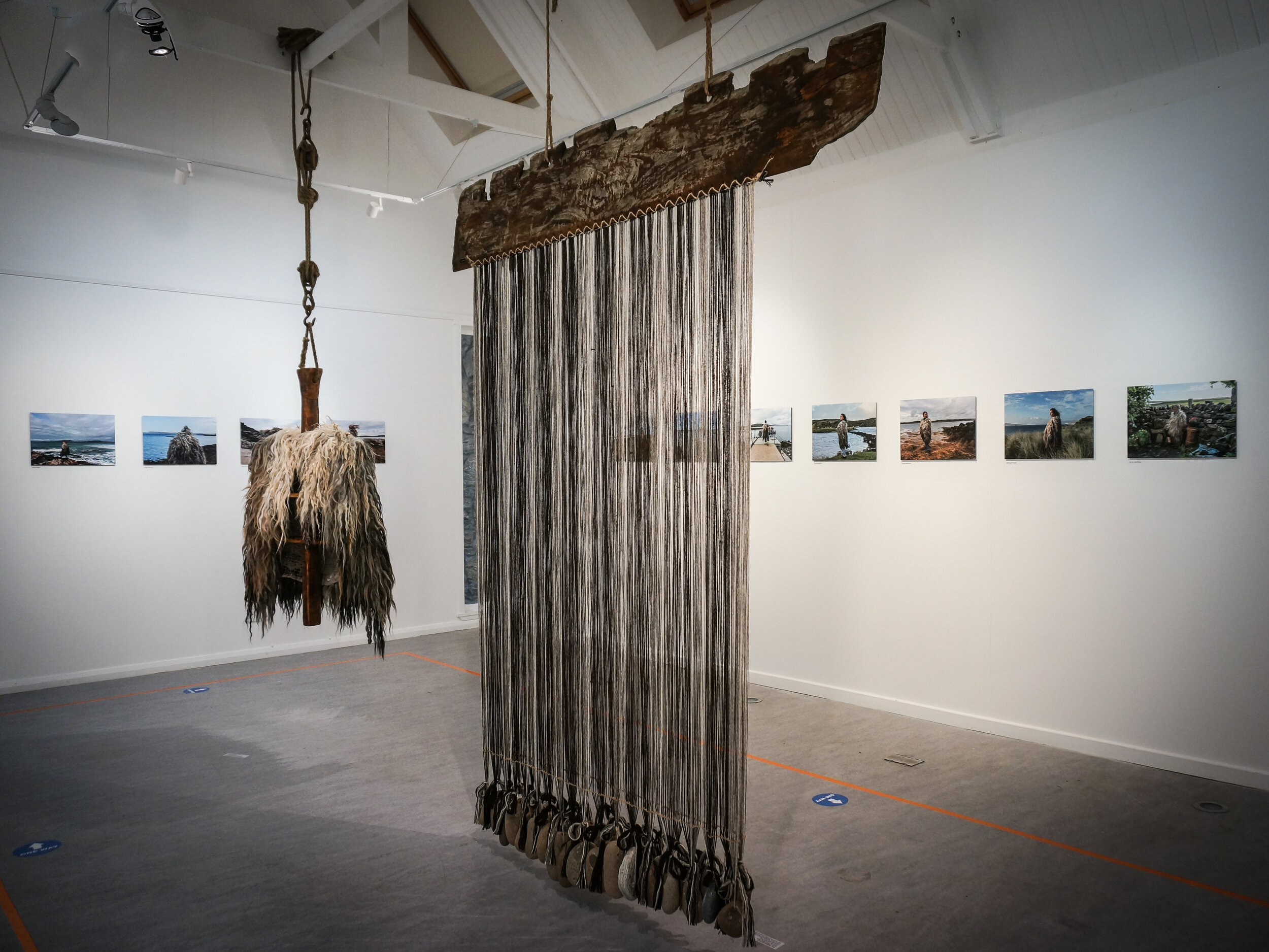
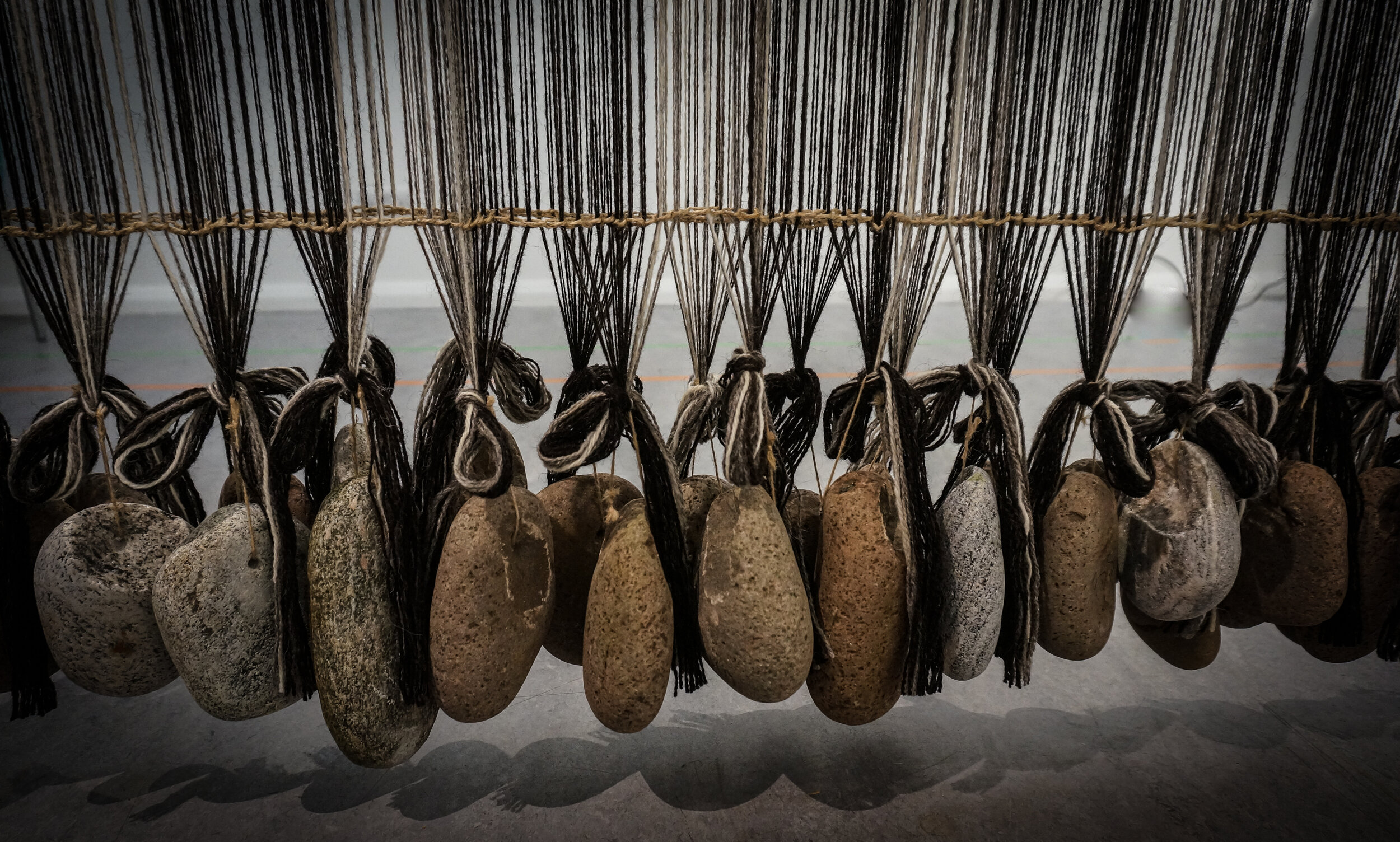
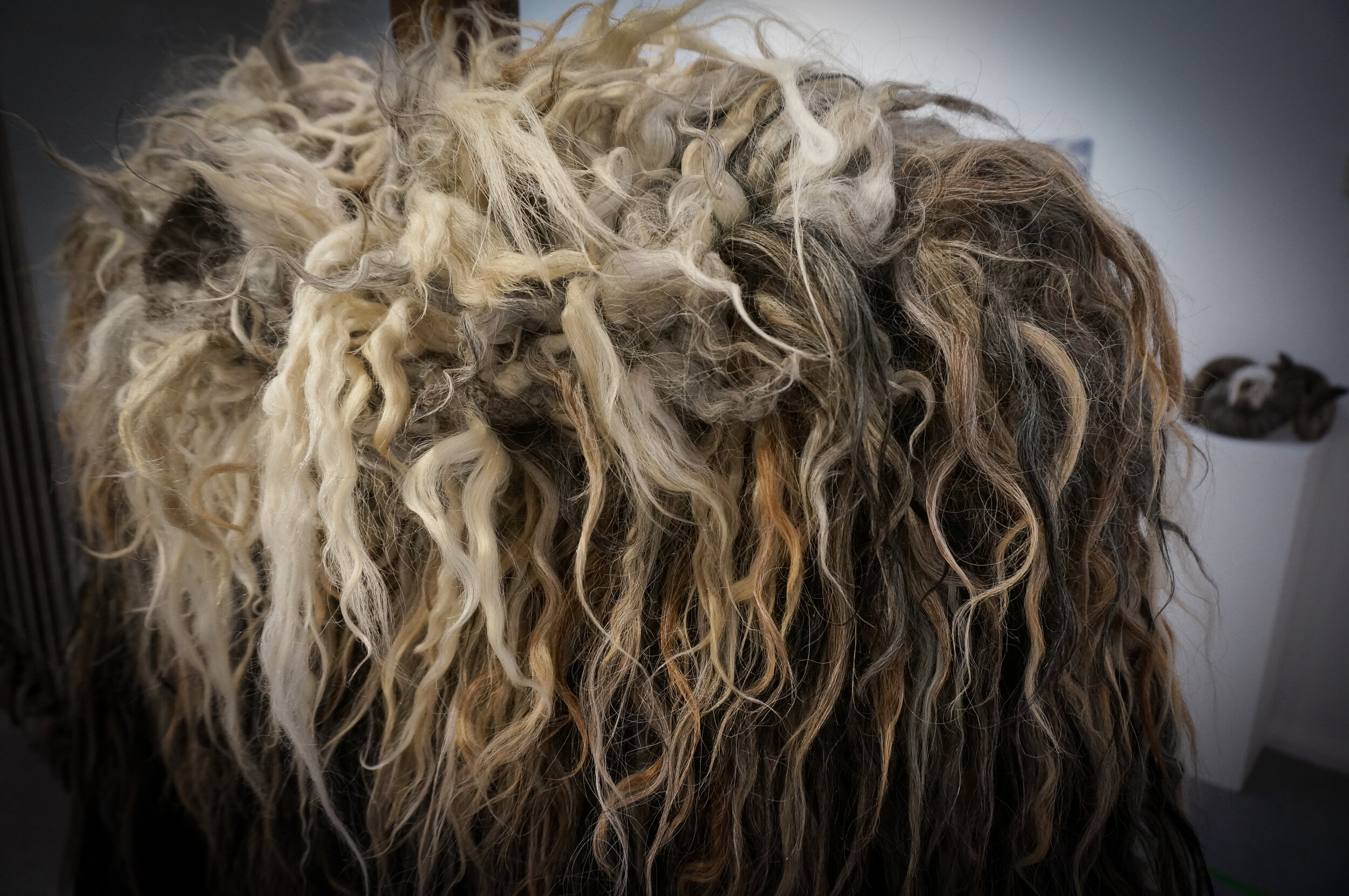
Auður’s story intertwined many aspects of who I am as an artist, crofter of Hebridean sheep and islander and I have been inspired by her bravery, vision and honourable female leadership. During February-March this year, following a residency in Iceland in 2019, I spent a month at Osterøy Museum, near Bergen, Norway weaving a vararfeldur viking ‘fur piled’ cloak on a warp weighted loom in honour of Auður. Such cloaks were status symbols in viking society and this work forms the focal piece of my art exhibition ‘Auður the Deep Minded’ at Taigh Chearsabhagh Museum and Art Gallery October-November (2020) and Osterøy Museum June-August (2021). The cloak is woven from North Atlantic sheep fleece from Norway, Hebrides, Orkney, Shetland, Faroes and Iceland tracking the voyage route of Auður. Sheep were essential to the vikings as a food source as well as clothing but most importantly they provided wool to make sails enabling them to make extensive sea voyages. Thus they took their North Atlantic sheep with them as they ventured across the Northern periphery and hence why we find the various breeds distributed in the former viking voyage routes.
During the reign of the Norse people from the 9th-13th centuries, the Outer Hebrides were referred to by mainland Highlanders as Innse Gall, ‘the land of the foreigners’. When the Norse migrated north they left behind their genes, place names and North Atlantic sheep. Today the sustainability of the Hebrides is under threat. Our population, though relatively stable, is ageing with a high level of our young people, particularly younger women, migrating away and the majority of in-migrants being males leading to a widening gender imbalance, in this way a similar story to that which has gone before.
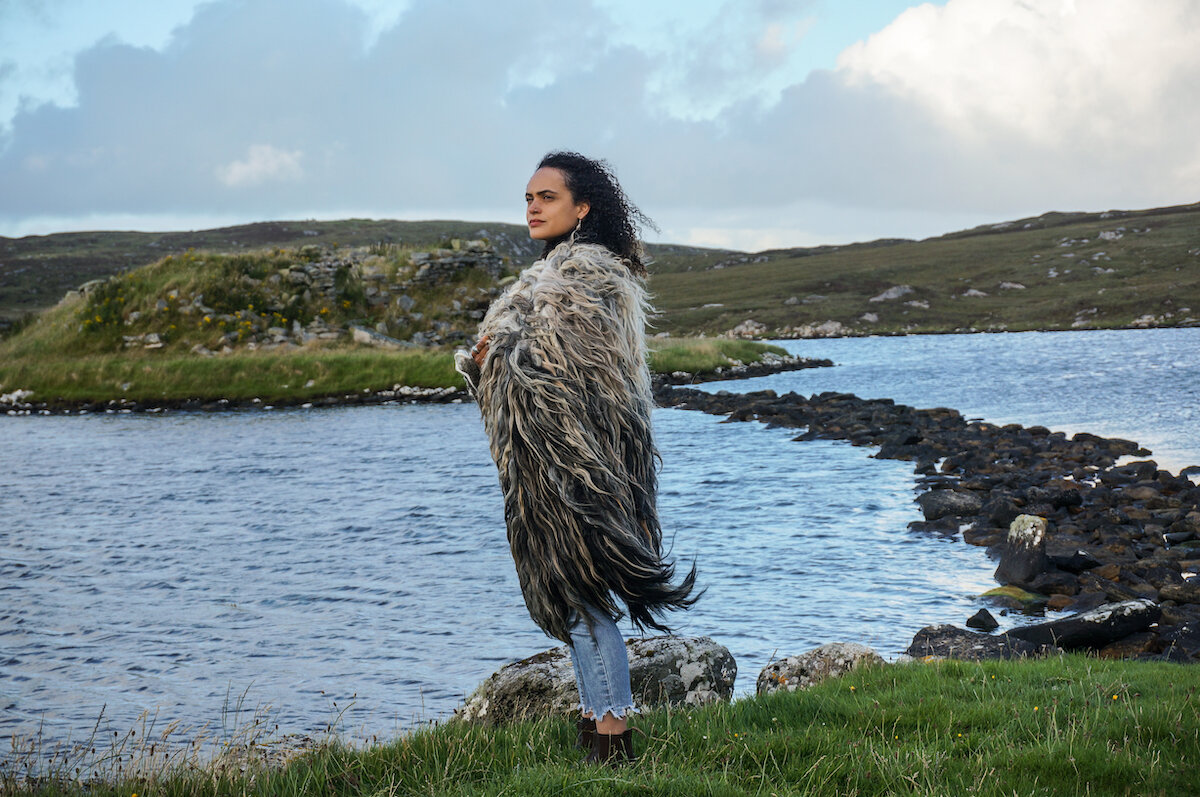
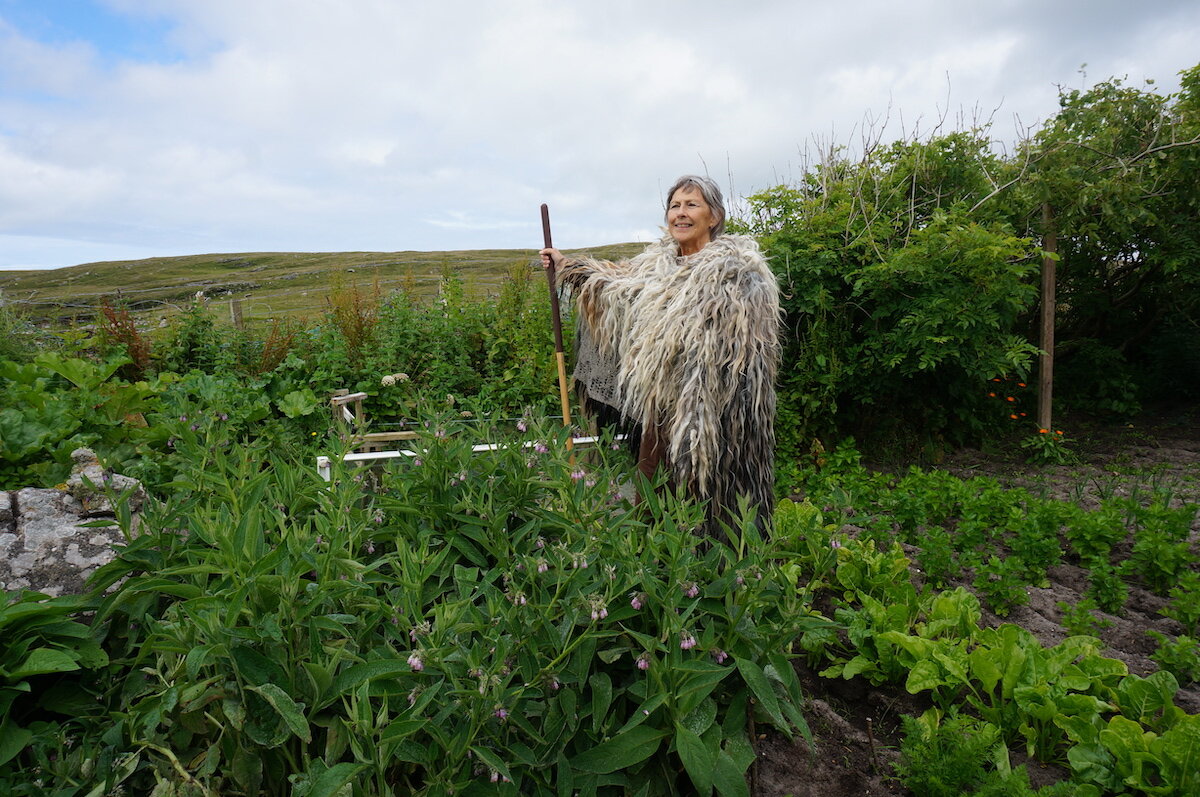
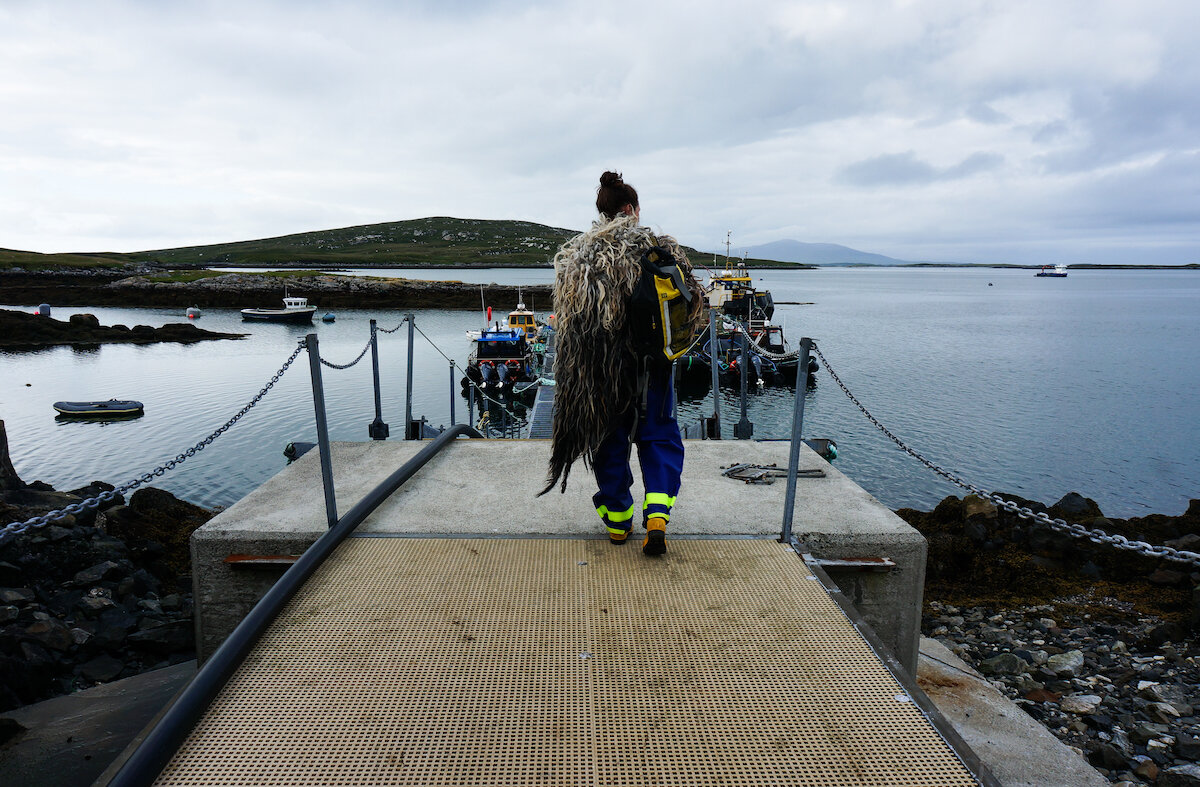

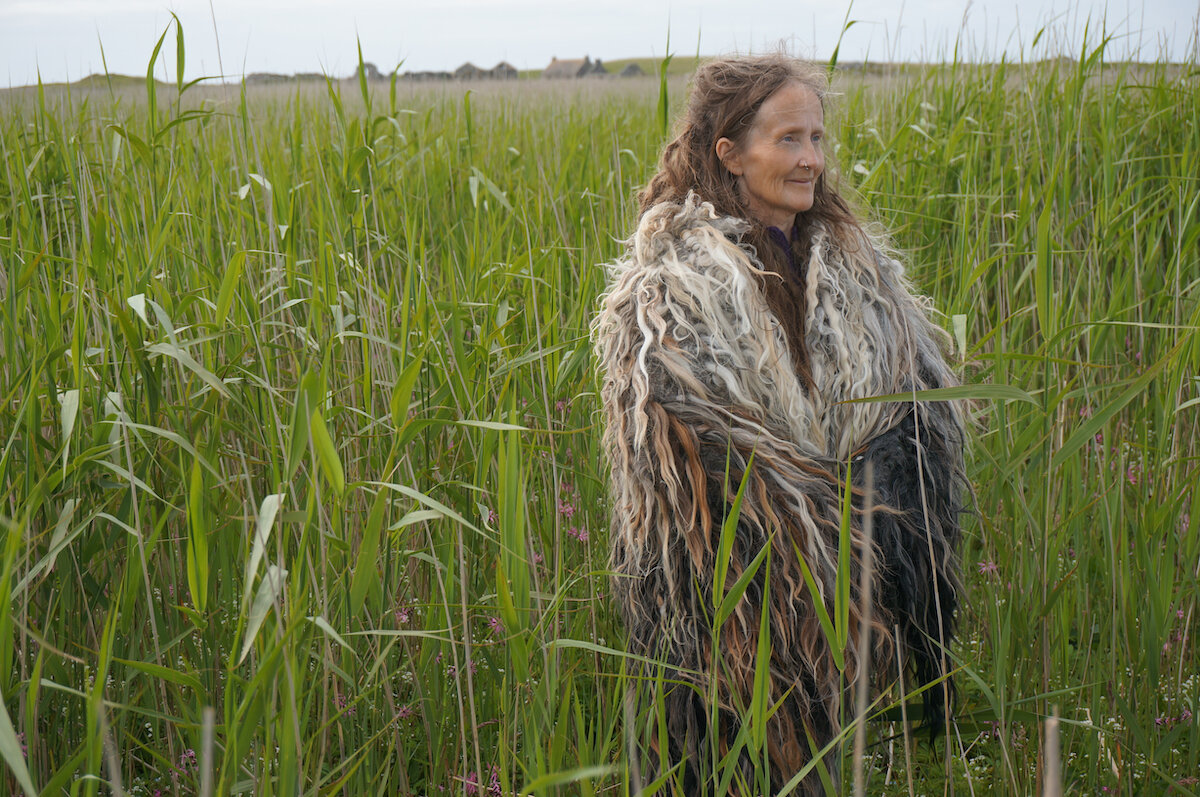
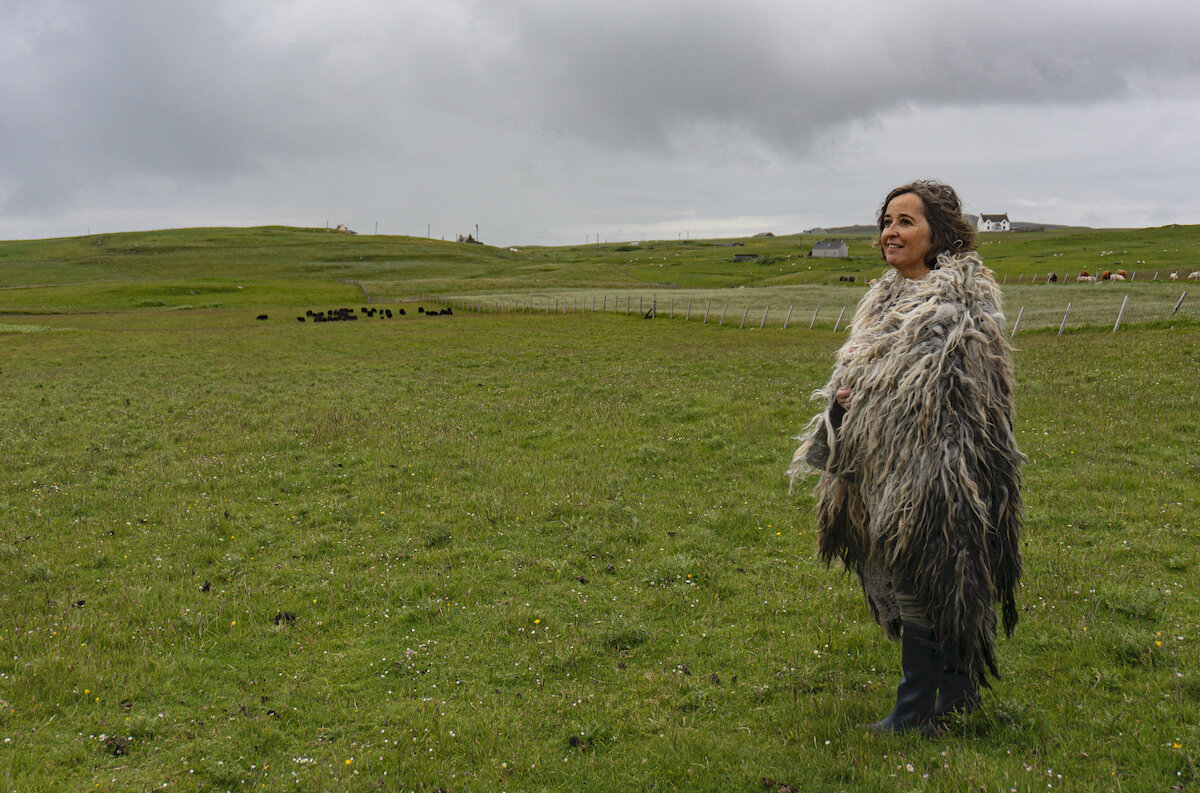

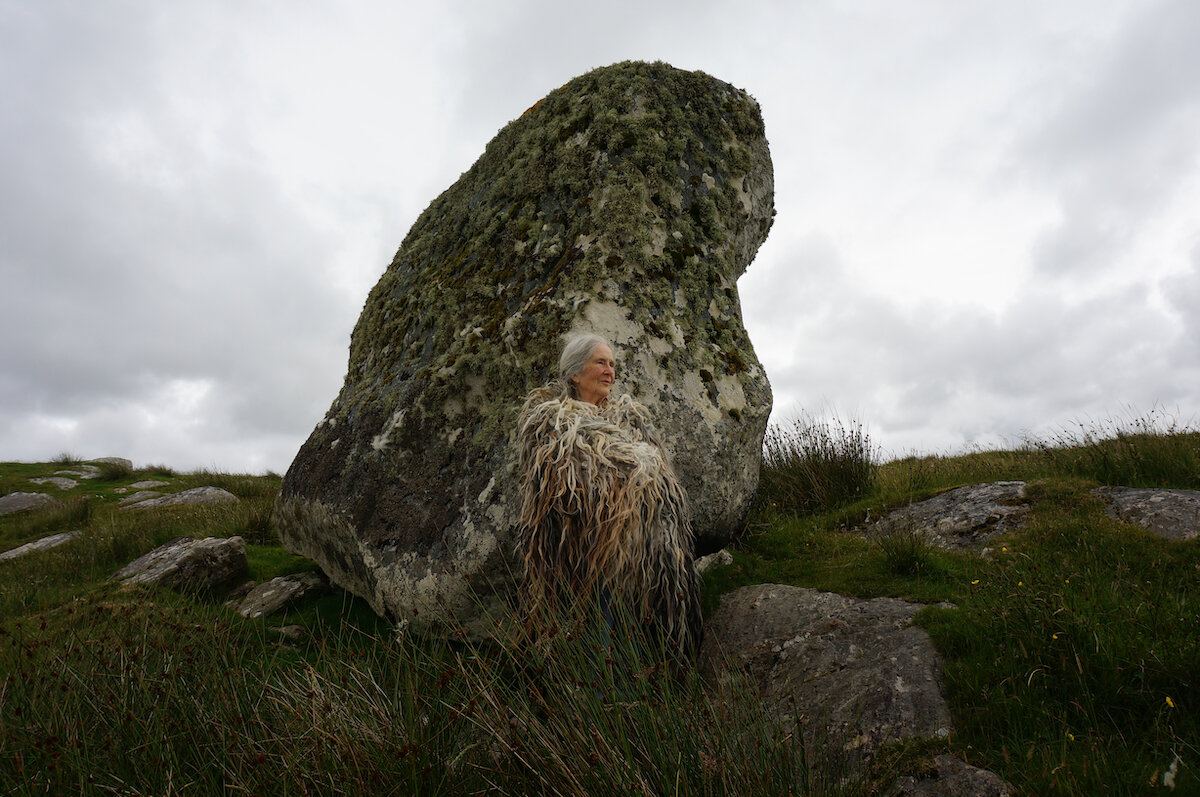
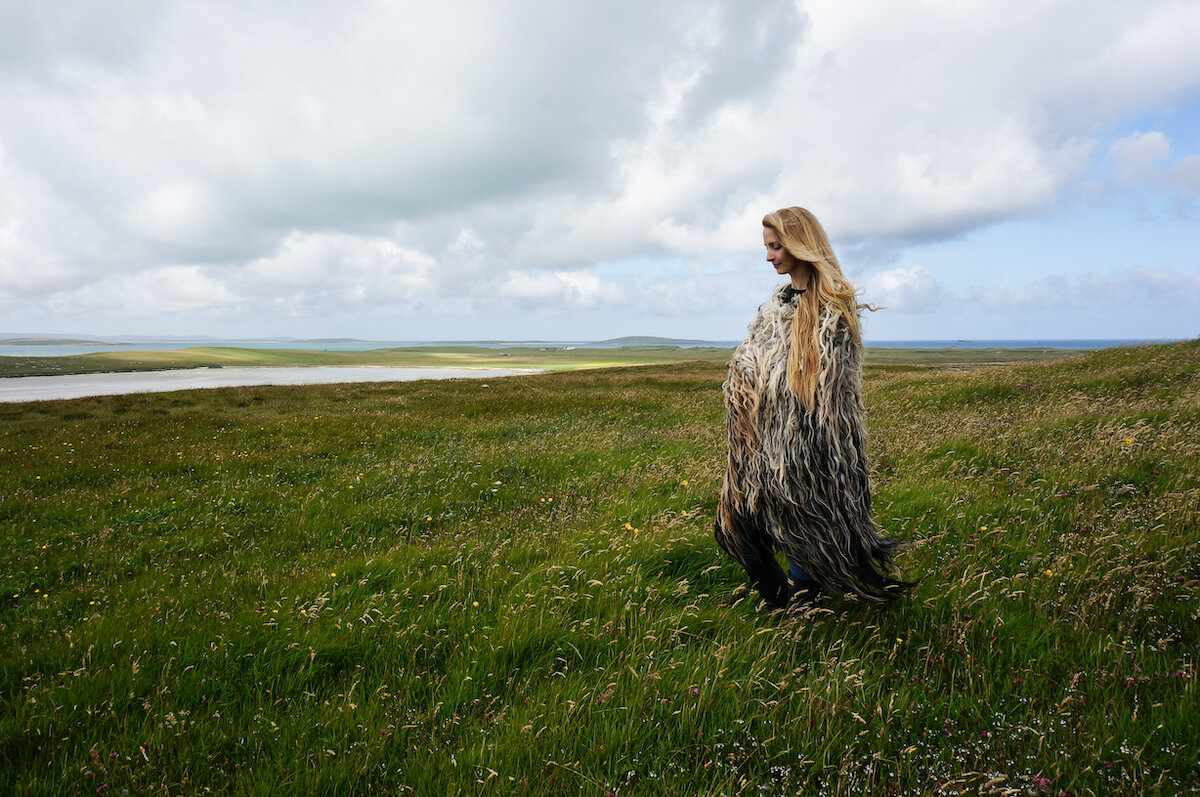
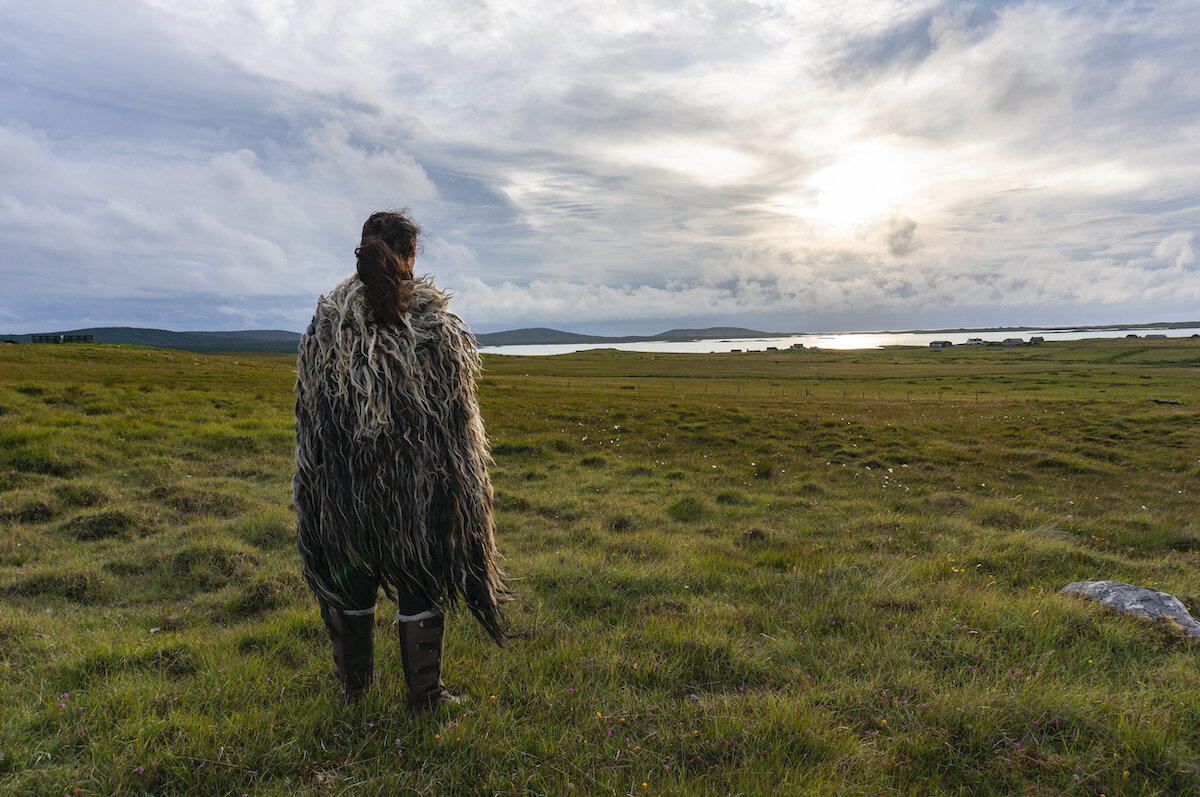
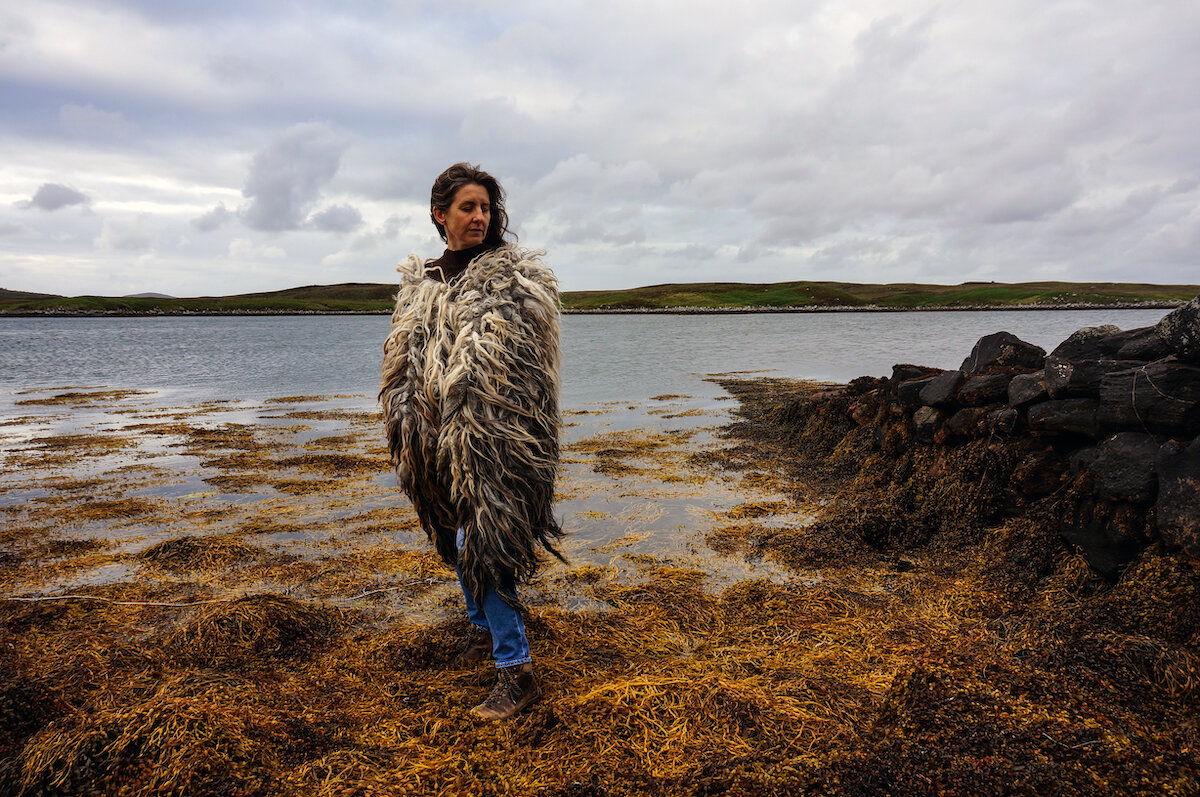
Over the summer months in collaboration with UistFilm, I invited women in the Uists to be filmed and photographed wearing the vararfeldur cloak within a place in the landscape where they felt a strong connection. Part of the process during each shoot was for me to share with them Auður’s saga and the Norse links between the Hebrides and Iceland. The ritual of wearing the cloak was then as if passing on the mantle and persona of Auður. In this way, the process both engaged a contemporary audience in Auður’s story of bravery while celebrating the women of the Hebrides today thus linking human experience over one thousand years.
You can find out more about the historical context of Auðrs story HERE and weaving the vararfeldur at Osterøy Museum in Norway HERE.
COVID 19: All film and photograph protocol was carried in accordance with current COVID scientific advice in relation to textiles and film production guidance.
This project has been supported by a Creative Scotland research and development grant.
I am grateful to the following organisations and people for their support of and contributions to this project:
Andy MacKinnon, Arts Manager / UistFilm Director, Taigh Chearsbhagh Museum and Art Gallery, North Uist, Outer Hebrides, Scotland.
Jóhanna E. Pálmadóttir, Project Manager, Textílmiðstöð Íslands / Icelandic Textile Center, Blönduós, Iceland.
Monika Ravnanger, Solveig Jordal and Marta Kløve Juuhl, Osterøy Museum, Osterøy island, near Bergen, Norway.
Dr. Antonia Thomas, Programme Leader MA Contemporary Art & Archaeology, University of the Highlands and Islands, Orkney College.
Rebecca Cotton of Rebecca Cotton Studio.
Ian Hoyle, Print Studio, Berneray.
A big thank you to the following businesses and shepherdesses of North Atlantic sheep who contributed yarn and raw fleece (photos relate to text from top left to bottom right):
Dorthea Joensen works for the Government Agricultural Department, Búnaðarstovan on the Faroe Islands. She breeds føroyskur seyđur (Faroese sheep) on her family farm, Signabøgarður and enjoys all sorts of wool work. Her farm contributes to the co-operative project Matkovin which promotes local produce from Faroese farmers, hunters and fishermen.
Viveka Velupillai and Ronnie Eunson run Uradale Yarns from their Organic Native Shetland sheep farm on Shetland. Their sheep are naturally multi-coloured, so their knitting yarns reflect the natural colours of their flock. Their wool is unbleached when organically scoured, spun and dyed with the colour range inspired by the plants that grow around Uradale.
A Yarn From North Ronaldsay Ltd is a small business based on the island of North Ronaldsay, Orkney whose main aim is to process and promote the fibre from the island's rare breed of seaweed eating sheep. They offer a wide range of natural high quality yarns, batts, rovings, and felt. Colours range from white through various shades of grey and brown to black, also colours can be mixed to produce variegated yarns.
Ragnhild Lie runs Lofoten Wool from Høystålet in the Lofoten islands, Norway. The yarn is produced from her own gammel norsk sua (old norse sheep breed) in a range of natural and dyed colours. To ensure nothing goes to waste Ragnhild also makes soap from the sheep lanolin and sells lamb meat in the autumn.
Berit Ophus farms goats and gammel norsk spel (old norse sheep breed) sheep on her farm and in the mountains on Osterøy island near Bergen, Norway. From her sheep she produces fleece for yarn, sheep skins and meat while from her goat milk she and her husband make brunost Norwegian cheese.
For your information - my business The Birlinn Yarn Company also contributed Hebridean fleece and yarn to this project. With my family, we breed pedigree Hebridean sheep on our croft on Berneray island in the Outer Hebrides. By working with other local crofters, The Birlinn Yarn Company produce a range of natural and organically dyed yarns that glean their aesthetic qualities from the Hebridean landscape and culture.
Ístex is the main wool processing company in Iceland producing high quality natural, sustainable and environmentally friendly products from Icelandic wool. The company operates a wool washing station in Blönduós and a spinning and banding factory in Mosfellsbær. Ístex buys wool directly from farmers, is 80% owned by farmers and they process about 99% of all Icelandic wool. Ístex publishes knitting patterns and produces hand-knitting yarn, such as Álafosslopi and Léttlopi, wool blankets and quilts from Icelandic wool.

